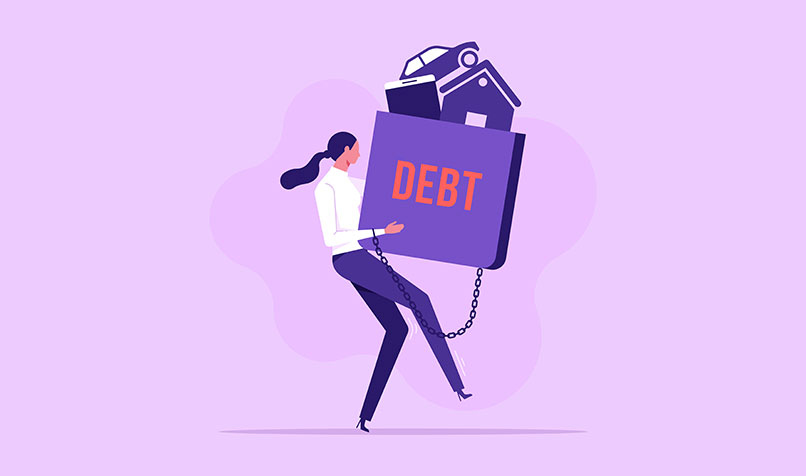Loading component...
At a glance
- Pay-on-demand services allow users to receive part of their pay right away rather than waiting until payday, subject to interest and upfront and monthly fees.
- Pay-on-demand services are subject to little consumer regulation, creating increased risk because users aren’t screened for their capacity to pay fees or repay loans.
- A major risk of using pay-on-demand services is regular usage. Users may struggle to catch up on debts because they become trapped in a cycle of regularly losing part of their pay to fees.
While driving to a meeting with the owner of a large business, US-based tech entrepreneur Safwan Shah stopped for a coffee. All around the coffee shop were payday lending businesses. The one with the longest queue at its door also had a sign promoting a special deal for employees of the business with which Shah was meeting, the largest employer in the area.
Shah’s meeting with the business owner was to discuss his new start-up, PayActiv, which helps organisations to make workers’ pay available to them at any time.
Such pay systems are yet to have any real effect in the Australia and New Zealand markets. Instead, we’re seeing the growth of pay-on-demand apps such as Beforepay, MyPayNow and CommBank’s AdvancePay.
“Pay-on-demand is similar to payday loans, but not exactly the same,” says Steve Mickenbecker, group executive financial services and chief commentator at Canstar. “With pay-on-demand, effectively you receive a portion of your pay straight away, so you don’t have to wait until payday.
“That’s a little bit different from payday loans, because it’s more immediately linked to your actual pay. Payday loans do that, too. But pay-on-demand lends a proportion of your pay, and then it’s paid back on your payday. Payday loans have more flexibility in the term of the loan, and can have more upfront fees, monthly fees and interest charges.”
How, then, should we feel about pay-on-demand offerings? Are they safer and less predatory than the payday loan operators who have made headlines for all the wrong reasons, or are they simply payday loans in disguise?
“I’m always nervous about pay-on-demand, because I think people can fall into traps,” Mickenbecker says.
"You’re a week behind on rent and you need some way of catching up and paying some bills, so you use a pay-on-demand service. But then you get near to the end of the next pay cycle, and you realise you’re in exactly the same situation you were in before, so you do it again. And on it goes. That’s when it becomes a trap."
“I’m not saying those traps are necessarily deliberately set. It’s OK if you use it once in a while, when you’ve got some sort of emergency, then you repay that amount immediately and you’re back on your feet. There’s no real problem with that.”
The difficulty arises, Mickenbecker says, when an individual transitions from being an occasional user to a habitual user.
“You’re a week behind on rent and you need some way of catching up and paying some bills, so you use a pay-on-demand service. But then you get near to the end of the next pay cycle, and you realise you’re in exactly the same situation you were in before, so you do it again. And on it goes. That’s when it becomes a trap,” he says.
Regular use then adds regular expense, creating a situation where added expense compounds the original problem.
Many pay-on-demand services charge a 5 per cent fee. That might be acceptable for a one-off expense, but if you’re using it each payday, Mickenbecker says, you’re effectively taking a 5 per cent pay cut on that part of your income.
“It’s your after-tax income as well, so it might even be worse than 5 per cent,” he says.
“Multiply that by 52 weeks a year and you’re taking a real hit. If you’re paying $5 per $100 borrowed once or twice a year, maybe it’s not a big deal. But if it’s every single week, it really is a big deal.”
What's the story with regulation?

Gerard Brody, CEO of Consumer Action Law Centre, recalls a case study of legal and financial strife that resulted from a lack of oversight in the pay-on-demand space.
“Someone got one of these loans based on an assessment of their payroll, but they’d recently lost their job, so they didn’t have any more money coming in,” says Brody. “That person was given the loan based on their last payslip, and debt collection was soon associated with that case.”
The only regulation in the space is the general consumer law that applies to all businesses, Brody says. This means they can’t mislead, engage in unconscionable conduct, or force unfair terms upon customers.
“Most have designed their businesses to avoid regulatory oversight in terms of licensing obligations, contract obligations or requirements to check affordability, that sort of thing,” he says.
“We’re really concerned about the growth of these businesses. They’re very akin to payday lenders. I question the ethics of imposing a financial services company between a low-income worker and their pay, which is what these early wage-access businesses do. I think it raises real ethical and moral questions about whether it’s appropriate to profit from payroll in that way.”
If an employer wants to engage a fintech business to deliver its payroll to its workers in a more efficient way, that’s a different relationship and is at a higher, corporate level.
Yet when there’s a direct-to-consumer offering between the fintech and the consumer, based on a consumer contract, it creates increased risk for the consumer around additional fees and the capacity to meet those repayments.
“Like Buy Now Pay Later businesses, these providers aren’t regulated in the same way as other lenders, so there are no requirements to assess whether repayments or payroll deductions have been confirmed as affordable. In the context of our organisation, we’re seeing financial difficulties being created as a result of these business models,” Brody says.
"Many of these business models aren’t effectively regulated,” he says. “There simply aren’t the same consumer protections that there are with other lenders. That’s important, because the customer is still being offered a loan."
The Consumer Action Law Centre sees cases of individuals turning to these types of lenders and taking loans from numerous lenders. The borrowers end up with funds from multiple brands, with direct debits coming out at different times from their transaction accounts, meaning they quickly lose control of their finances.
“Regulation in this area is basically the same as... Buy Now Pay Later... although in that space some businesses have their own self-regulation. Not that I’m saying that does much,” Brody says. “But I don’t think this sector even does that.”
Mickenbecker agrees that a lack of regulation is a serious problem in the pay-on-demand space. It falls outside the National Credit Code, meaning consumers fall outside the national consumer protection regime the code was developed to create.
“With pay-on-demand being outside the code, there’s no necessity to do an affordability assessment,” he says.
“Providers do require proof of income, but they don’t need to find out what other expenses you might have, or what your real capacity to repay is. There aren’t any defined hardship provisions or dispute resolution processes. They don’t necessarily do a credit check.”
Without doing credit checks, as Brody mentioned, providers don’t know how many other pay-on-demand, Buy Now Pay Later or payday loan arrangements an individual has, meaning they might be doubling up.
“There is quite a risk that people can get themselves into real trouble,” Mickenbecker says.
Investigating the deeper problem

Shah’s business was born out of a simple realisation. In a world of astounding levels of flexibility and access, he saw the rigidity of the salary payment system as ripe for disruption.
“In a world where the history of recorded music is available on demand, where Amazon can dispatch a drone in seconds and can deliver and bring any package to our home in hours, why do workers need to wait two weeks to a month to get paid?” Shah says in a TedX Talk explaining the drivers behind PayActiv.
“Why don’t they have the option to access their own money? And make no mistake, it is their money. They have performed the work. The work has been received by the employer. So why is the employer borrowing from the employee interest free?
“Landlords get paid in advance. Vendors get paid upon delivery…imagine walking into a Starbucks and saying, ‘I’d like a cup of coffee, and I’ll pay you in two weeks’.”
According to Shah’s calculations, high interest rates from payday loans, as well as overdraft fees and late payment fees, are costing Americans about US$200 billion (A$287 billion) annually.
“The irony is that [these people] are the ones who clean buildings, who push wheelchairs in hospitals, who take calls when we complain, who take care of the elderly,” he said. “These are the people who keep the lights on, who keep the economy humming, who we now call the essential workers.”
Shah’s research also revealed that financially stressed employees lose about 20 hours per month of work in terms of productivity.
The outcome of his research, and the basis of the PayActiv offering, is the concept of earned wage access.
It is the calculation of how much a person has earned at any point in time, and the open access by that employee to the money they have already earned, for free or at a small cost.
It all brings up the question, Mickenbecker says, of whether a person’s pay cycle should match their spending habits or whether their spending habits should match their pay cycle. The traditional answer is the latter, and this might be a discussion for accountants to have with clients.
“I think that’s probably still the right answer, that spending habits should match pay cycles,” he says.
“The other side of this is a question about spending. That’s probably the biggest change we’ve seen. We have become a bit more of a society that says, ‘I want it now’.
“Buy Now Pay Later has really fostered that view. Years ago, people would put something on lay-by, knowing they would have it in three or four months.
Buy Now Pay Later and, to a lesser extent, pay-on-demand, means we’ll walk out with it today and pay it off over the next few months.”
Brody says his advice to accountants is simple and straightforward.
“You need to know that many of these business models aren’t effectively regulated,” he says. “There simply aren’t the same consumer protections that there are with other lenders. That’s important, because the customer is still being offered a loan.”

